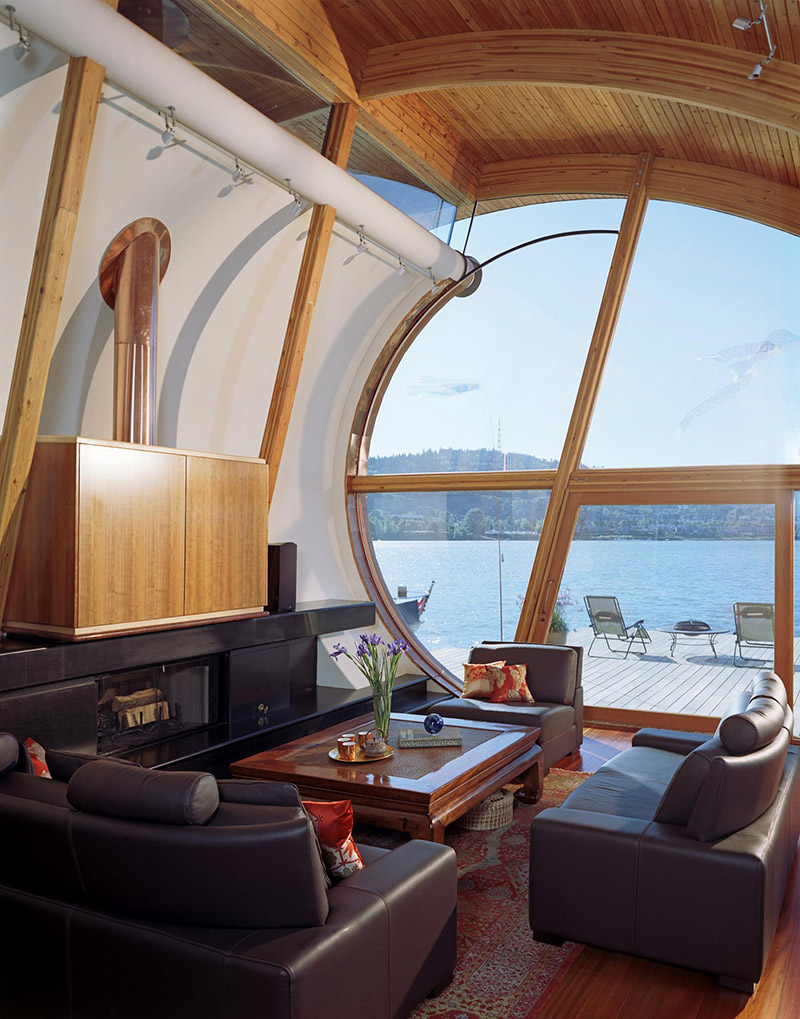
There’s something so romantic about living waterside. Waking up to a dramatic view, whether from the banks of a lake, ocean, river, or even a tiny brook, always seems to have a soothing effect on the soul.
One way to amp up the romance is to take the dwelling off the shore and put it right onto the water, as Portland, Oregon-based organic architect Robert Oshatz did for his clients. The professional couple, who spend most of their time in downtown Portland, had purchased a mooring on the east side of the Willamette River, an active commercial and recreational body of water.
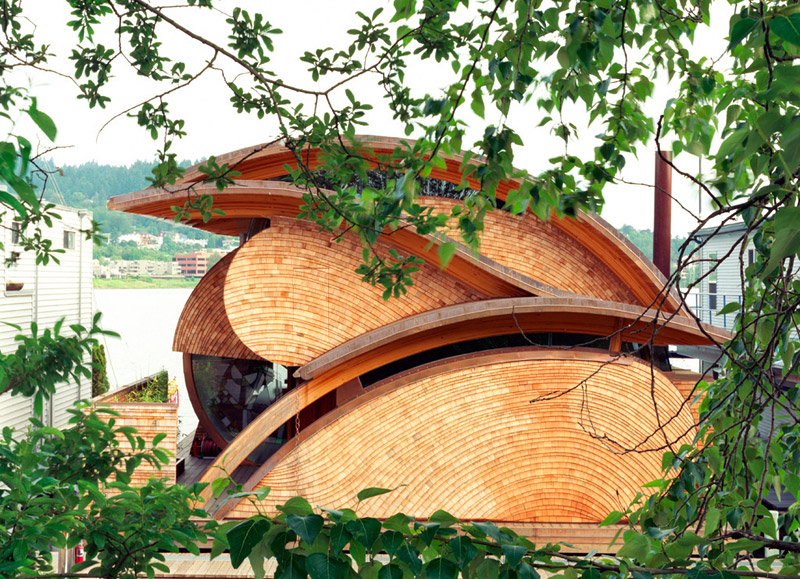
They turned to Oshatz, known for his curvaceous, swooping architecture, to create a floating Fennell house as their weekend and summer retreat. The 2,364 sq. ft.-home features a passive approach to site, daylighting and ventilation.
Fennell House – The Ultimate Floating Home
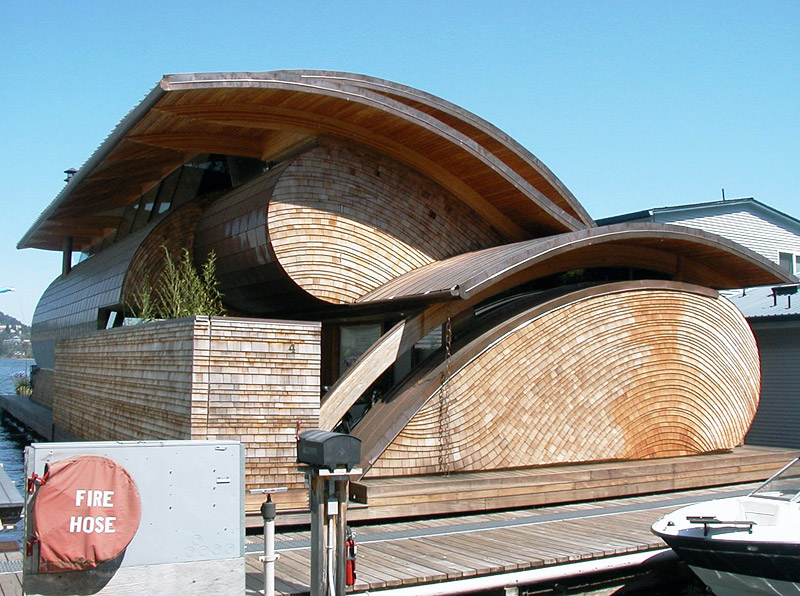
Robert Oshatz is well known for his unique approach to design and architecture. His creations are unique expressions of identity and form and this floating Fennell house comes as no exception.
Oshatz wanted to design a house that would only function if it were situated on water, not something that could work equally well on land.
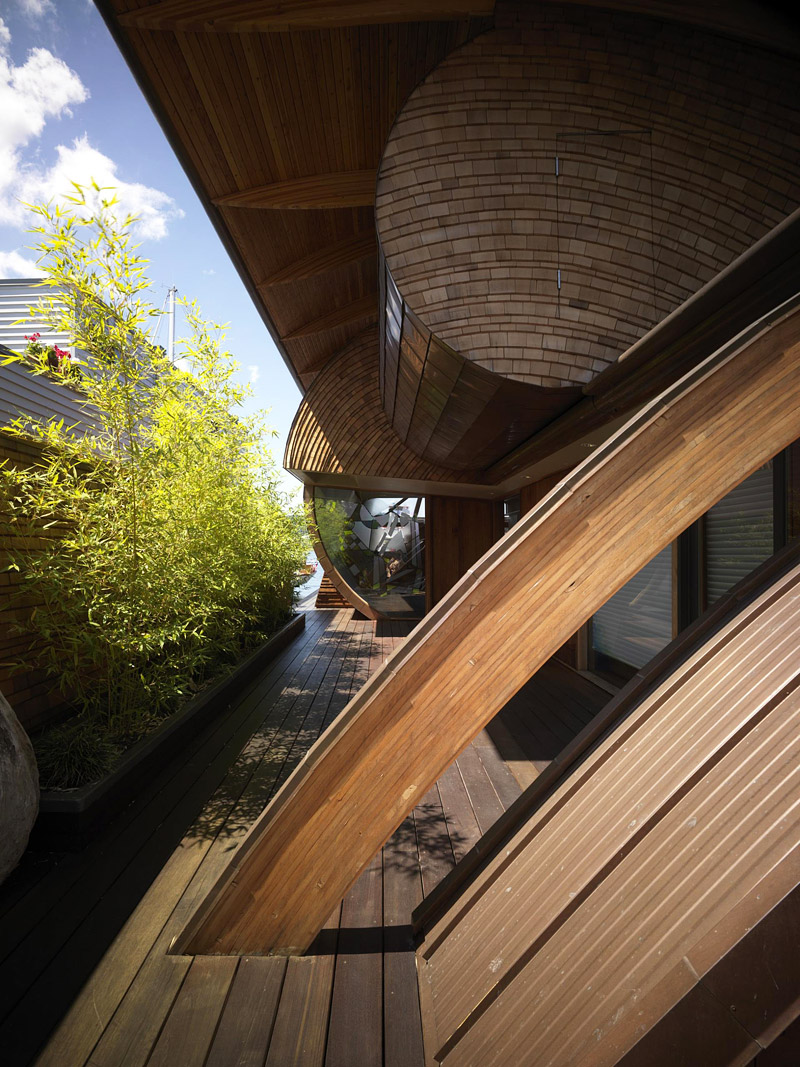
“I believe that every house has a sense of poetry to it, so what I wanted to do was design a house which would reflect the poetry of the movement of the river.” – says Oshatz.
The geometry of the Fennell house works in symmetry with the rippling movement of the water, forming what looks like a great wave breaking. The key element to the design is through the capturing of the feeling of the movement of the river and the flow of the river. The structure should be at peace with itself and at peace with its environment.
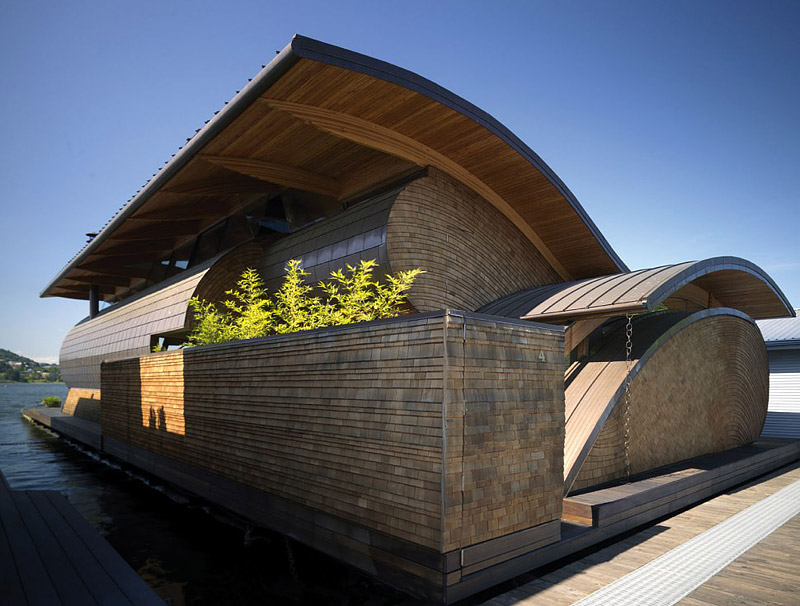
The entire Fennell house structure is made from Glulam wood beams that Oshatz stacked and connected to make his signature swirling and curved design. Glulam is made from a number of small pieces of timber glued together, rather than a large singular piece of wood.
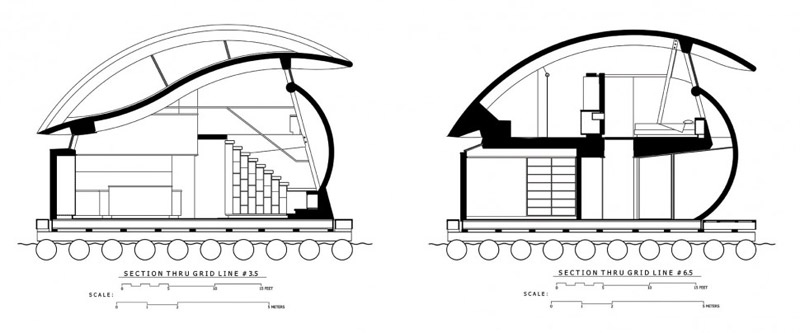
This not only makes it super versatile but also greatly reduces the overall amount of material used. Glulam wood is much lighter than most building materials like steel and timber and is also easy to produce without using a great deal of energy.
For Fennell house, in addition to addressing the programmatic requirements, Oshatz had the challenge of building a house that was sturdy yet able to float, and he had to deal with the fact that active construction on the Willamette is prohibited.
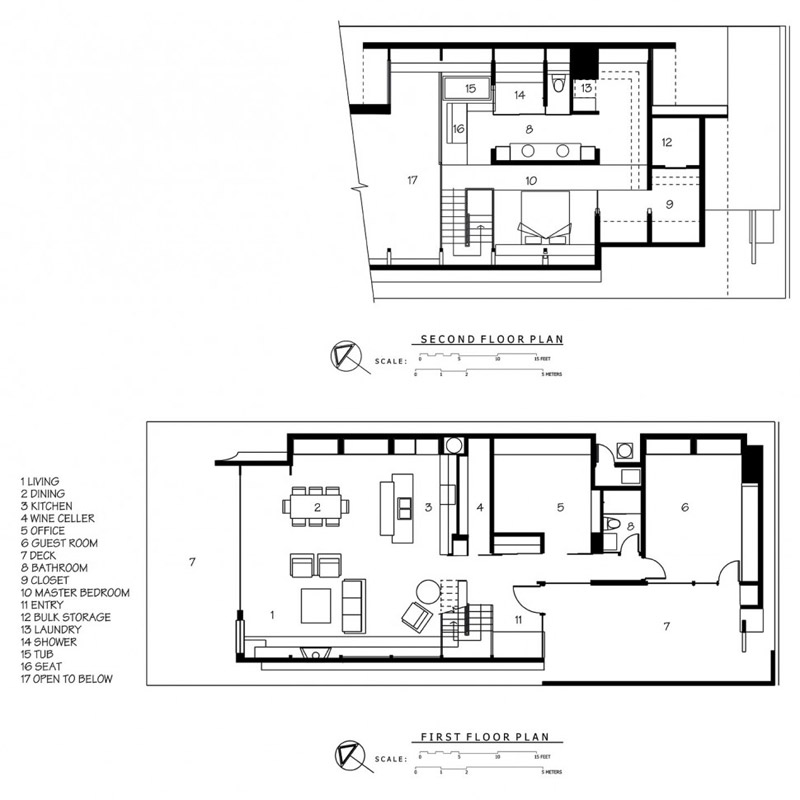
The actual construction of the home had to occur offsite, on the connected Columbia River, then pulled by barge to its mooring. Also, moorings on either side were less than 10 feet away, the house had to provide privacy despite the close proximity to neighbors.
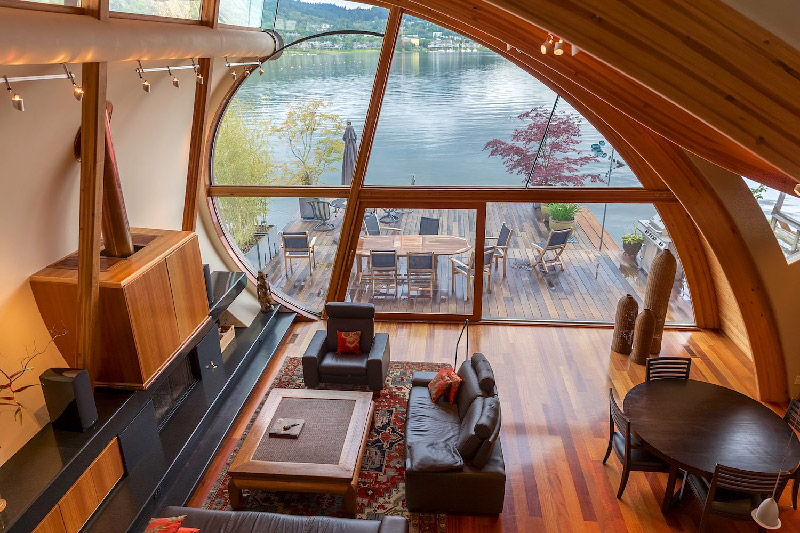
The clients wanted a largely open plan interior, requiring no more than a master bedroom, a study, guest bed and bath, and kitchen and living areas.

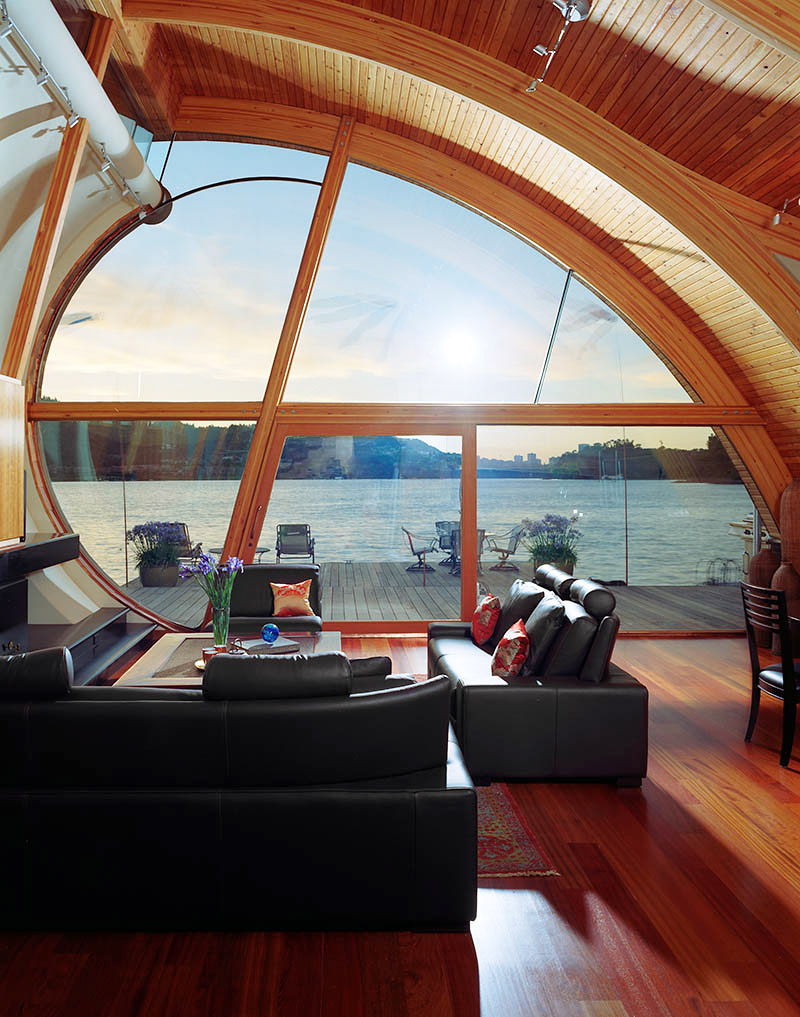
With the floor plan and programme established the creative mind of Oshatz conjured up this inspired design to enclose the space perfectly. A variety of different woods were used in the construction and decoration.
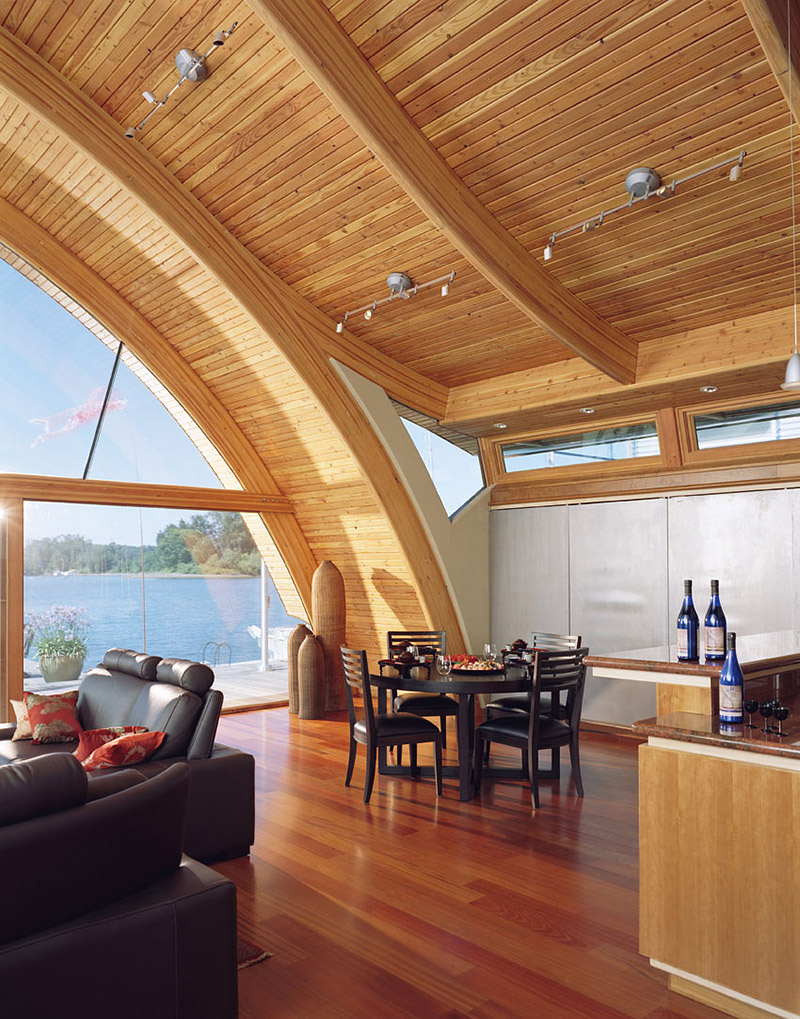
Douglas fir glulam beams form the house’s gracefully curving ceiling. Every beam is on exactly the same radius. The Fennell house is topped with copper tiles, a favorite material of the clients who envisioned it weathering with the years and ageing with the house.
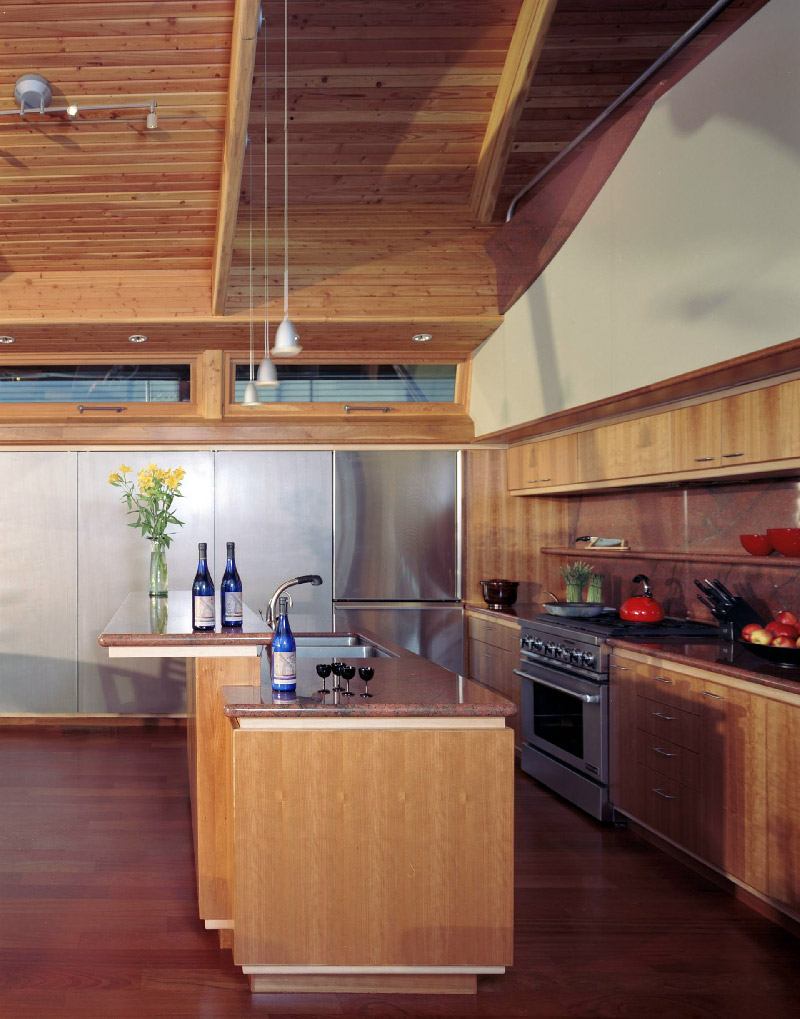
The Fennell house is kept afloat by 80 foot Douglas fir logs, all locally sourced and Cedar shingles clad the exterior faces. The interior is similarly clothed in quality material finishes. Built in cabinets and storage made of American cherry and Brazilian cherry floors and stairs add a warmth to the house’s atmosphere. To complete the look, a floor to ceiling glass sliding door opens up onto an uninterrupted vista of the river.
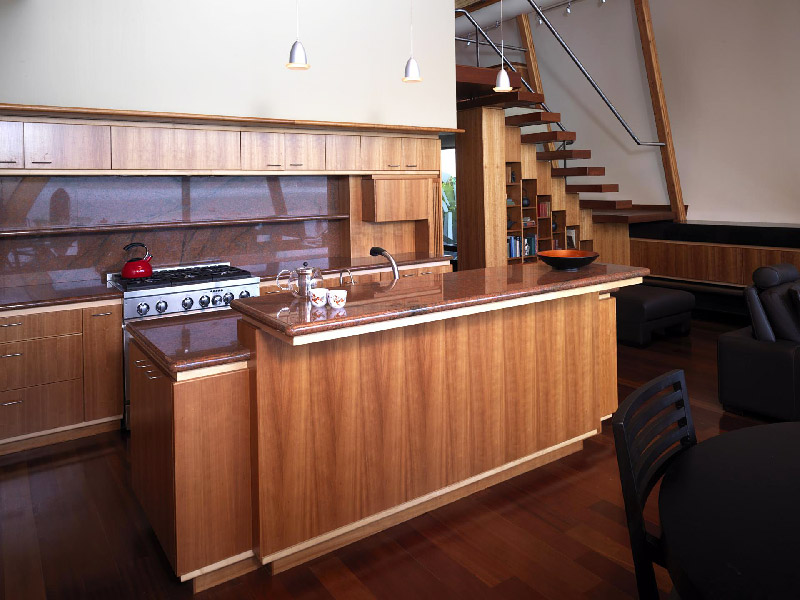
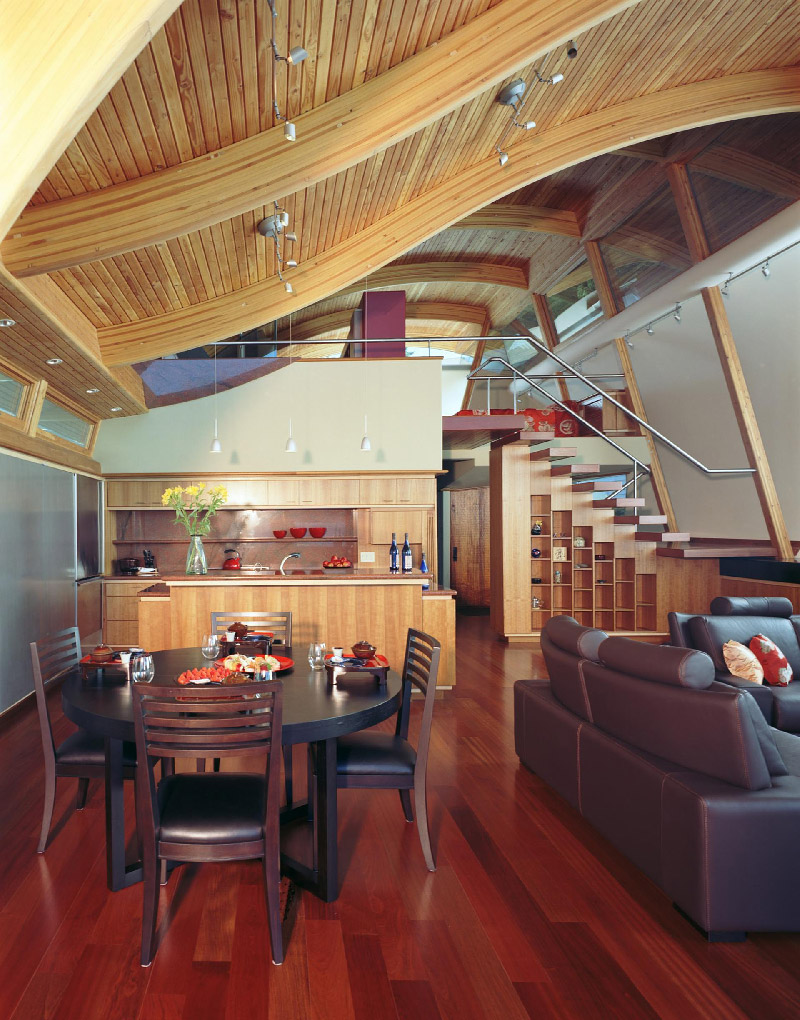
The home’s sprawling window wall is not only for taking in amazing river views. The glass allows the sun’s rays to heat and light the home during the day while providing natural ventilation.

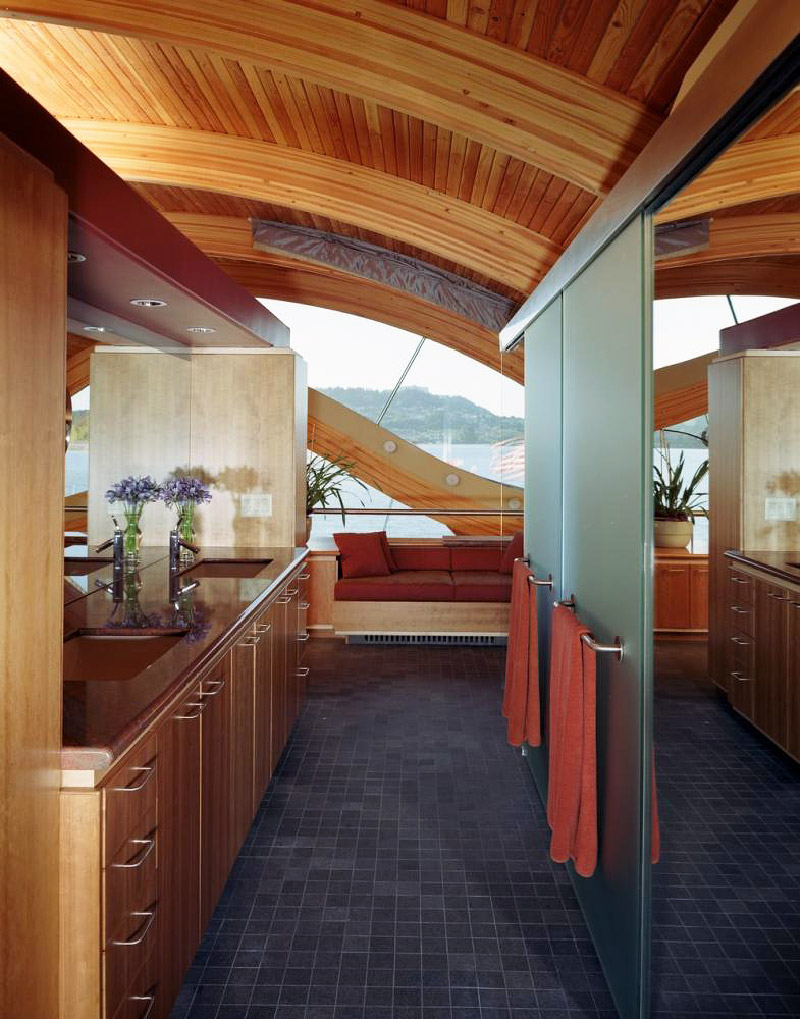
The two level residence is bright and open, with a lofted master bed and bathroom. The main level includes an expansive common area to gather and enjoy the waterside. With materials prefabricated and barged in on a boat, the home’s construction required minimal amounts of energy.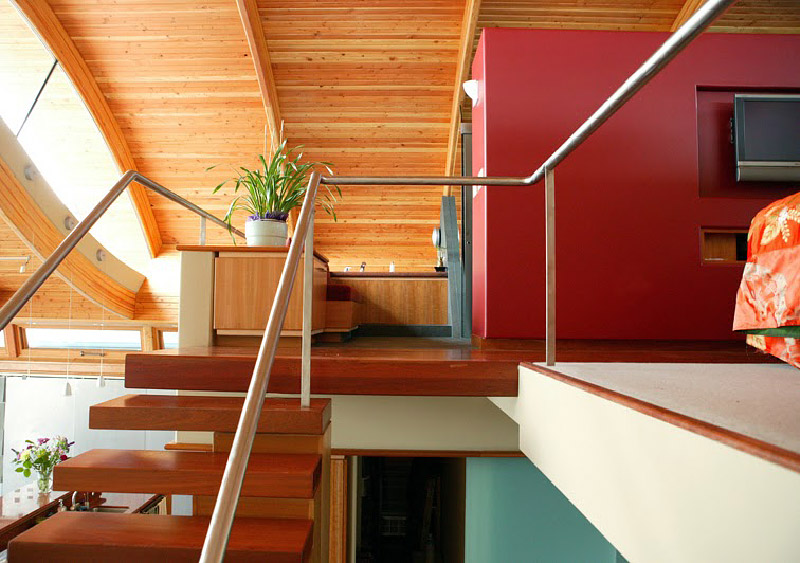
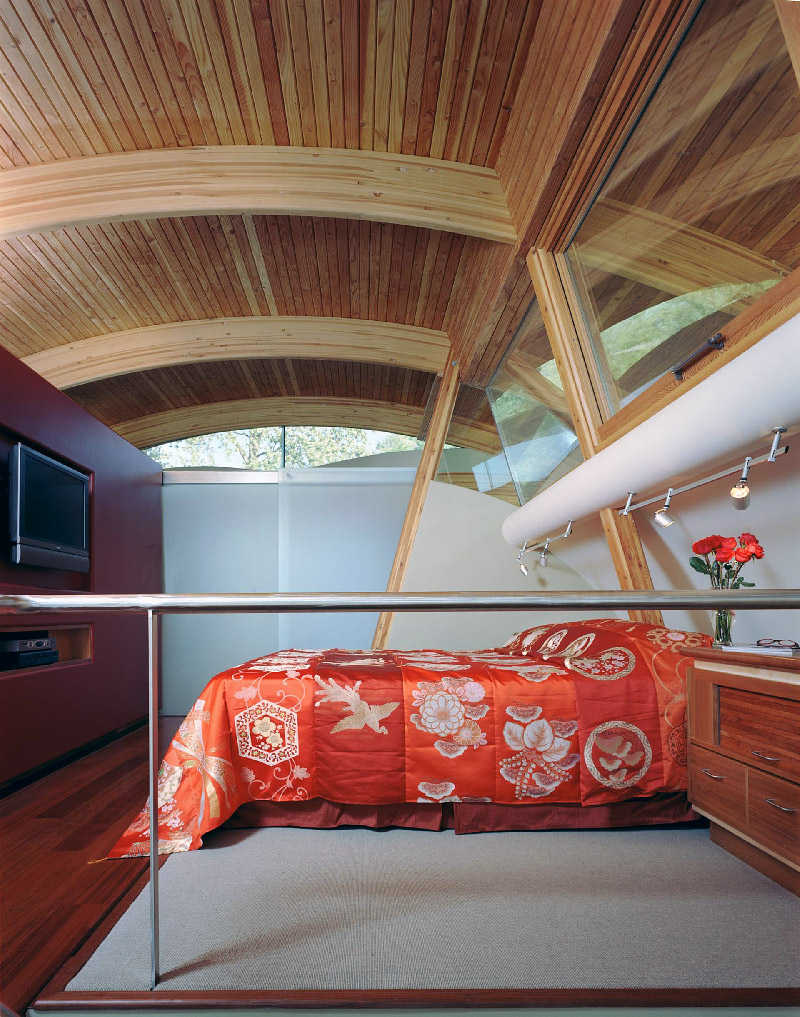
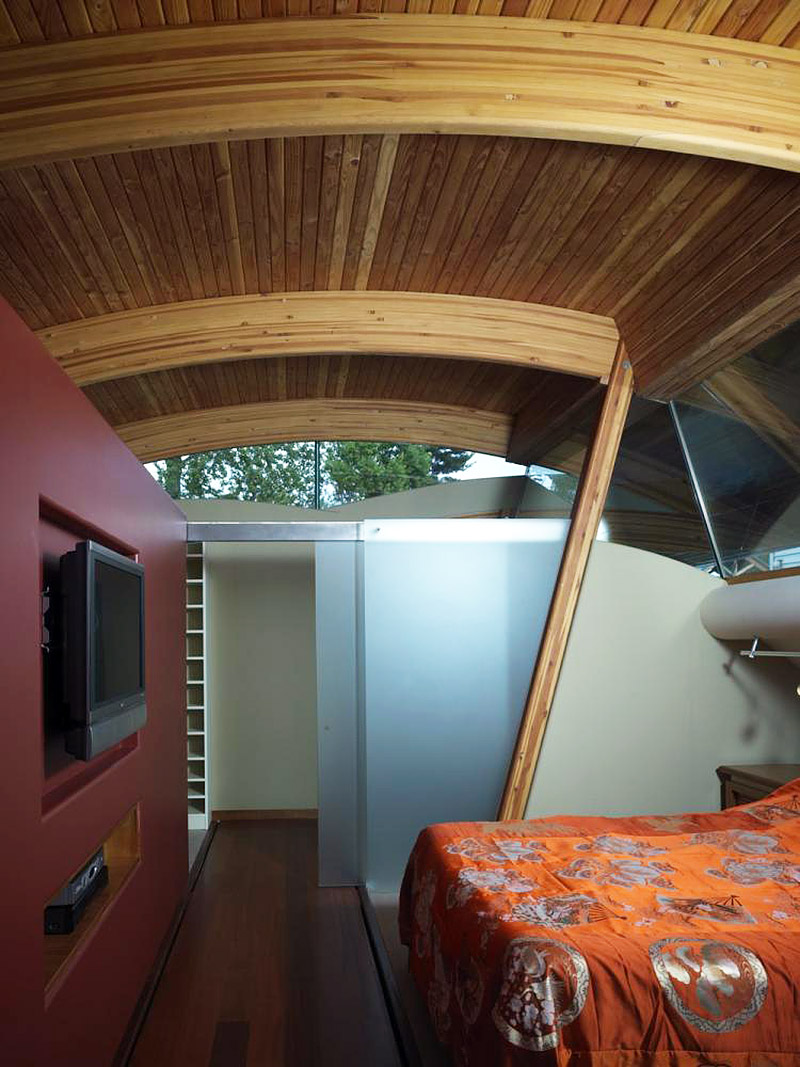
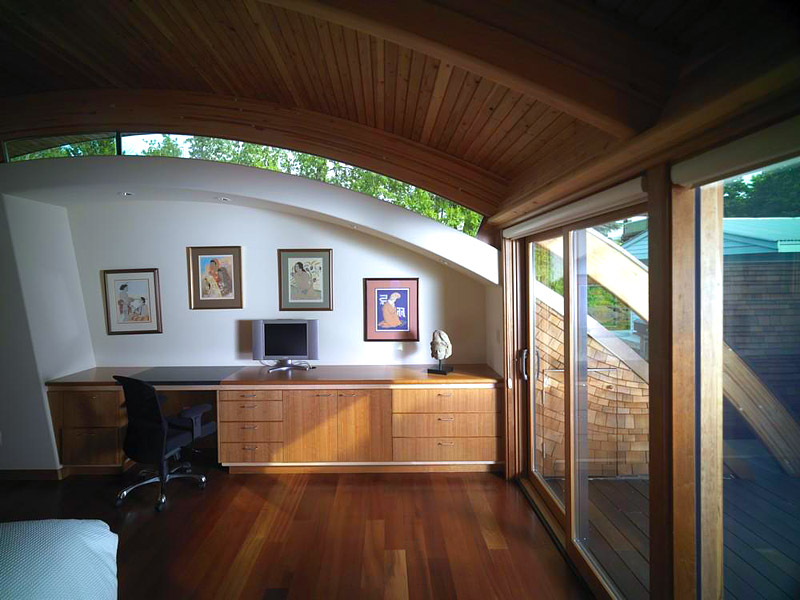
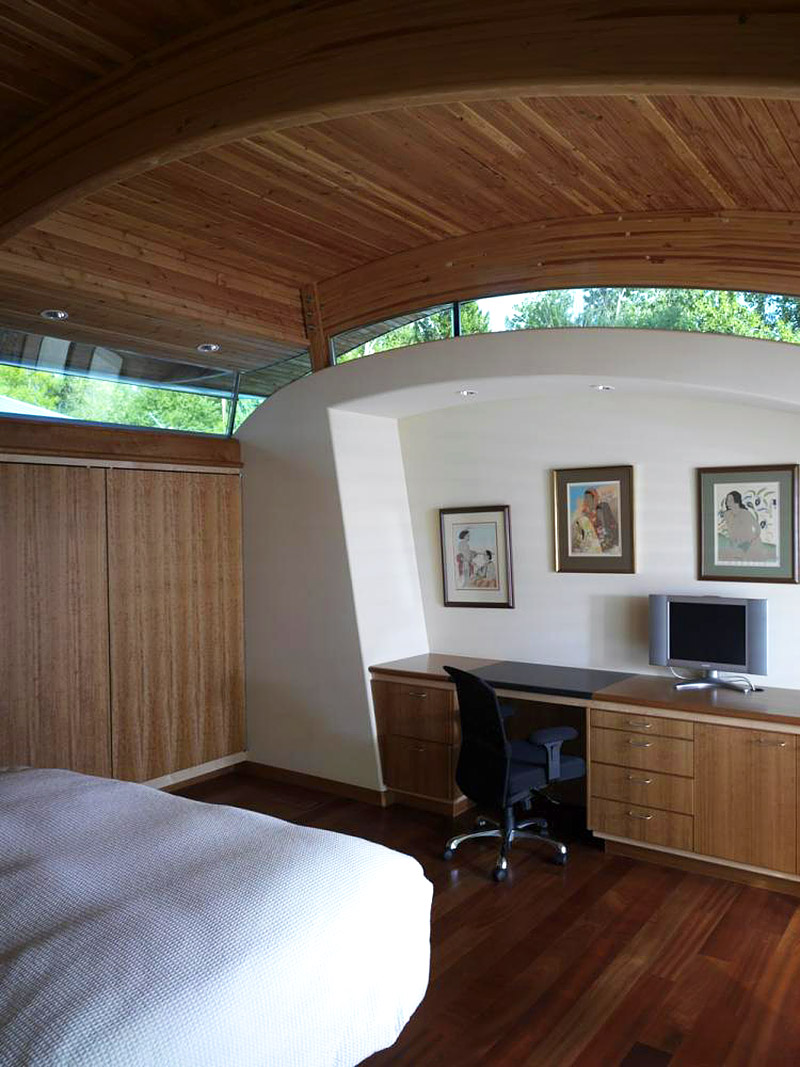
Most importantly, construction did not disrupt the atmosphere of the river, which is also national natural landmark. With this amazing floating Fennell home, Oshatz defies the odds again, seamlessly integrating a beautiful, modern home into its surrounding environment.

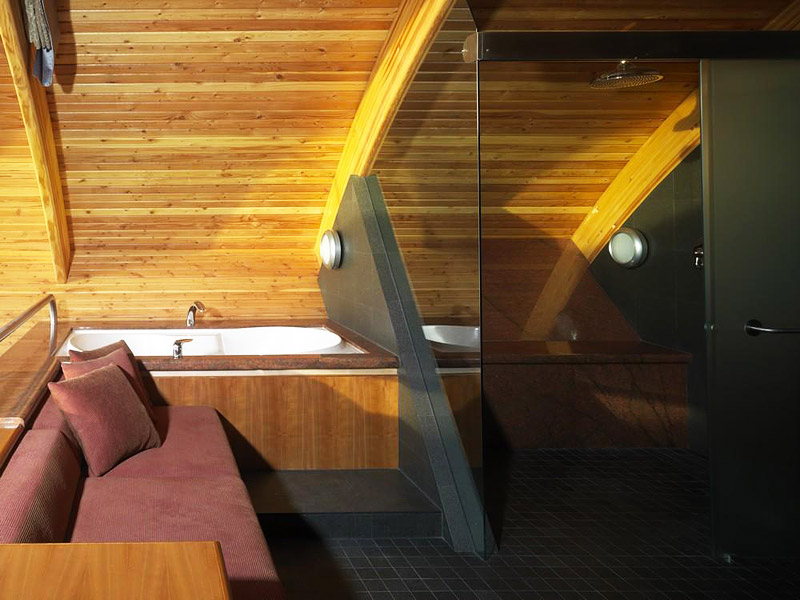

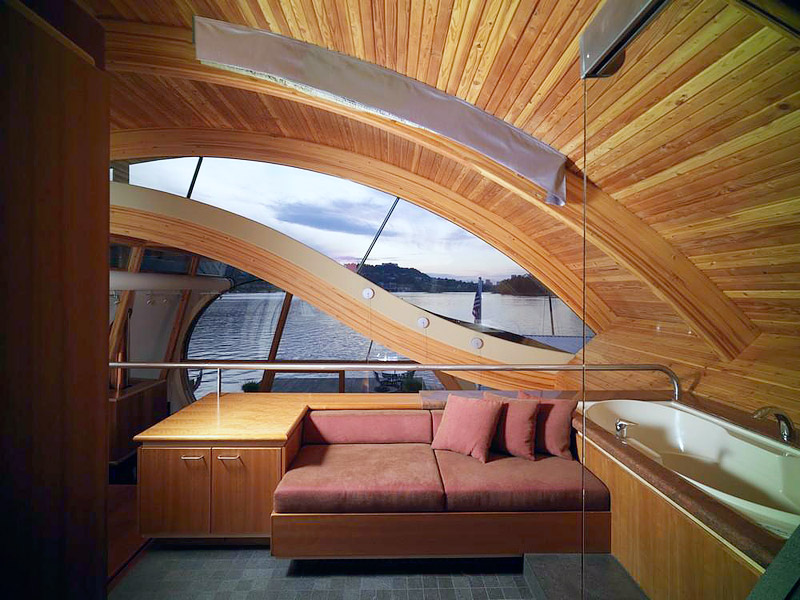



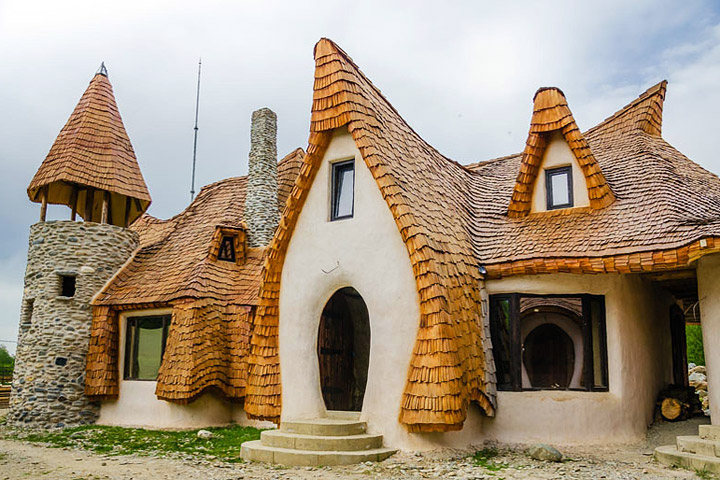
Leave a Reply